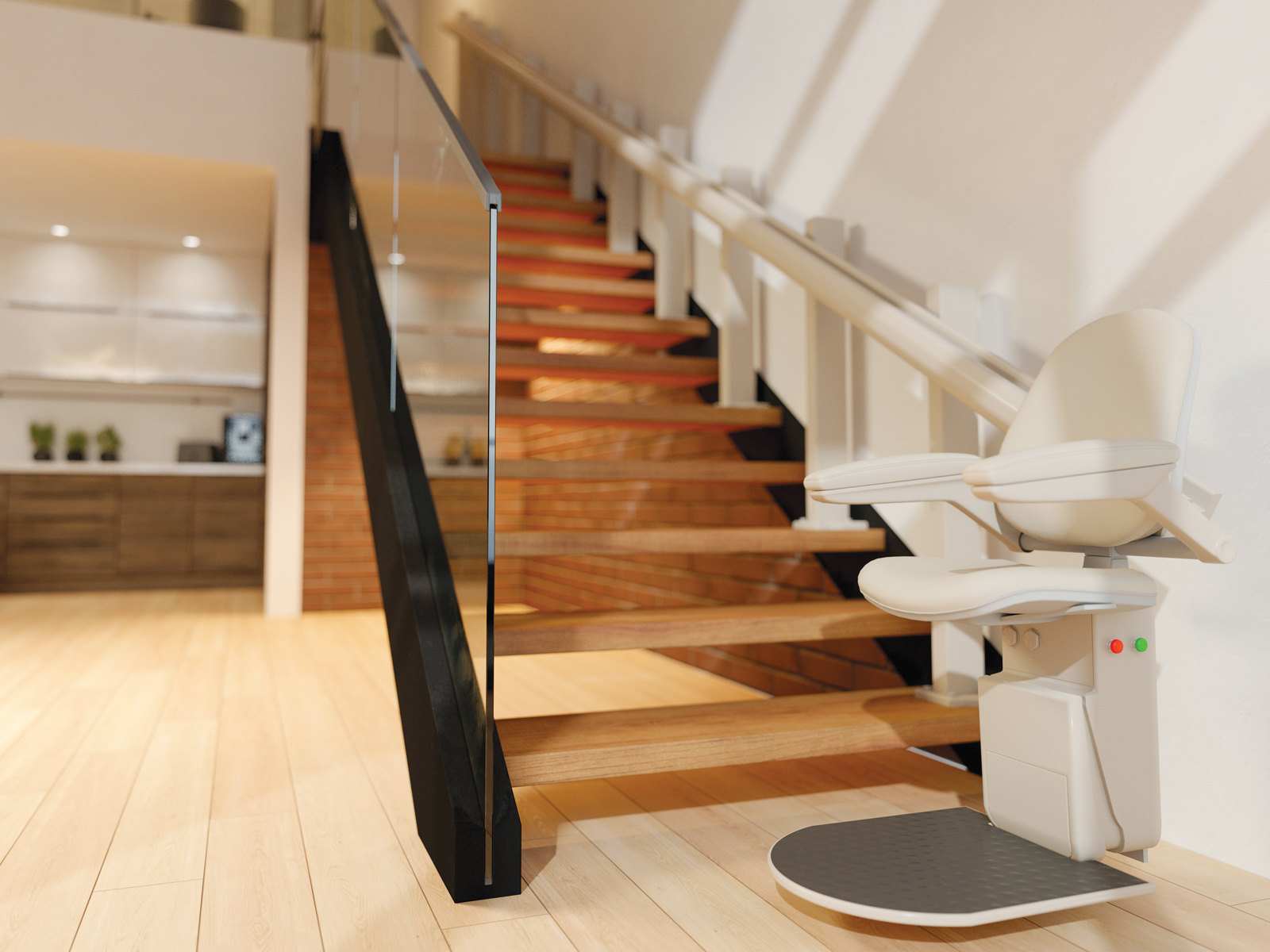By Caroline Tapp-McDougall
While stairs can be barriers and hazardous, moving into a bungalow or limiting access to one floor of your home may not be an option. If you find yourself with stair climbing challenges, you’ll probably want to look into installing some sort of stairlift or elevator.
When looking for a stairlift, you may find yourself confused by technical jargon and the wide range of models available. You should be able to get informed advice from an occupational therapist or other home-care pro in your area. Read on for some basic info about what’s available and what you should consider when buying a lift. Wise advice—be cautious when considering pre-owned equipment, as many safety features have changed in newer models. Here are three basic stairlift types:
1) Conventional stairlifts
This is the most common type of lift, generally used by people who can walk but have trouble with
stairs. Fixed to a straight or curved track, these lifts can usually be mounted on either side of the staircase. While most lifts come with a chair, there are models for people who prefer to stand or perch on lift. Here are two options to think about:
• Folding armrests and footplates: Many lifts block off quite a bit of the stair area, so you may need to fold away footplates, armrests, and the seat while the lift is not being used. If you’re going to need to fold the footplates, make sure that this can be done safely and easily, because it may need to be done several times each day, and it can be a very tricky task!
• Swivel seats: When getting off the lift, the person using it needs to turn themselves around so that they’re facing away from the stairs. A swivel seat can make this much easier. Check for models that can be operated either manually or electrically depending on your needs.
• Wheelchair access: Think about: How will the person get their wheelchair on and off of the lift? Is there enough room at the top and bottom of the stairs to get the wheelchair on the lift? Will you need two wheelchairs? One at the top and one at the bottom? Make sure there is enough room on the lift for the person, their wheelchair, and a helper if necessary.
2) Wheelchair platform lifts
These lifts, specially designed to handle wheelchairs, are often the most practical option for someone who needs to get up and down the stairs without leaving their wheelchair. If you’re considering this option, note that you may need to lower the area at the bottom of the stairs to provide level access for the wheelchair over the platform. Also, make sure there’s enough space at the top and the bottom of the stairs for the wheelchair to turn around when the person’s getting off. Think about how other people may be inconvenienced by the lift.
3) Vertical or through-floor lifts
Check out this option if there’s not enough room around the stairs for a regular lift or a wheelchair platform lift. This lift will carry the person from a place like the living room on the lower floor up to a bedroom or landing. The lift car can be either fully or partially enclosed, and the lift can be constructed with or without a shaft, depending on your needs. Do note that this option can be quite expensive, since renovations are often required!
In most cases families are able to adjust quickly and easily to stairlift additions, but it’s vital that safety functions that lock or stop the lift in emergencies are working to protect in case of falls, pets, or young children.
• Think about space: Stairlifts run on tracks and generally take up quite a bit of room on the stairs. Be sure to ask sales representatives how much room the lift will take up on the stairs and whether any parts can be folded away easily to make room.
• Safety first: Stairlifts will stop if they encounter any object or person obstructing the stairs. Through-floor lifts and wheelchair platform lifts also have mechanisms to prevent someone being crushed by them. Lifts also generally have guards to prevent fingers from moving parts.
Caroline Tapp-McDougall is a healthcare journalist and author of The Complete Guide For Family Caregivers.
Stairlift purchasing tips
Seek advice: Ask an occupational therapist to advise you on the best choice of lift for your home. When purchasing, be sure to ask as many questions as you need to about the lifts, since installing a lift can have a significant impact on your home configuration and lifestyle.
Try before you buy: Purchasing and installing a lift can be a significant investment. Be sure to try out any model before buying to make sure that it suits your needs.
Ask for a home demonstration: A sales representative may be able to arrange a visit for you to someone’s home so that you can see first-hand what a stairlift or through-floor lift is like. Take this opportunity, if you have it!
Consider funding options: Lifts and structural adaptations are expensive. Think about funding options before you decide to make a purchase. Some benefits or insurance packages cover home modifications and lifts, but often only if labour costs and equipment purchases are pre-approved.













